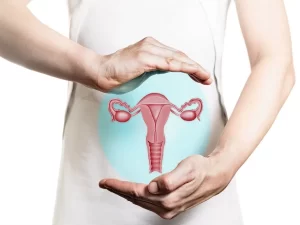Dr. Pavan Yadav, Lead Consultant – Interventional Pulmonology & Lung Transplantation
Sleep apnea, a condition characterized by disrupted sleep patterns, daytime fatigue, and various health concerns, demands a comprehensive approach for effective management beyond conventional treatments such as CPAP machines. In this exploration, we emphasize the importance of sleeping positions for individuals contending with sleep apnea, providing insights to improve sleep quality and overall well-being.
Individuals with sleep apnea may find relief through specific sleeping positions. For instance, adopting a straight side sleeping position contributes to maintaining a neutral spinal alignment. Adding pillow support between the knees reduces lower back strain and encourages proper alignment. Additionally, hugging a body pillow can elevate the upper body, promoting better airflow and minimizing the risk of apnea episodes.
An elevated upper body position during sleep can prevent airway collapse and reduce obstructions. This can be achieved by sleeping on the back with an elevated head, using a wedge pillow, or adjusting the bed frame to ensure optimal airway patency.
In addition to sleeping positions, maintaining a consistent sleep schedule is crucial for regulating the body’s internal clock. Creating an optimal sleep environment with subdued lighting, a comfortable mattress, and minimal noise contributes to a conducive atmosphere. It’s also advisable to avoid triggers such as heavy meals, alcohol, or sedatives close to bedtime, as they can exacerbate sleep apnea symptoms.
For individuals using a CPAP machine, considerations should be made to ensure that the mask and tubing accommodate the chosen sleeping position.
while no single sleeping position can entirely eliminate sleep apnea, adopting positions like side sleeping and sleeping with an elevated upper body can significantly enhance sleep quality and alleviate symptoms. It is recommended to experiment with different positions and seek guidance from sleep specialists for personalized advice. A holistic approach that integrates lifestyle adjustments, diverse treatment modalities, and healthy sleep habits provides a comprehensive strategy to effectively manage sleep apnea, fostering restful sleep and improved overall well-being.
Important points with regard to Sleep Apnea
Side Sleeping Position: Sleeping on your side is generally recommended for individuals with sleep apnea. This position can help keep your airways open and reduce the likelihood of obstruction. Here are some tips for side sleeping:
– Straight side sleeping: Lie on your side with your body in a straight, neutral position.
– Pillow support: Place a supportive pillow between your knees to maintain proper spinal alignment and reduce strain on your lower back.
– Body pillow: Hug a body pillow to keep your upper body slightly elevated, promoting better airflow and minimizing the risk of apnea episodes.
Consider the following sleeping positions to promote smoother breathing
– Elevated Upper Body Position
– Sleeping on your back with an elevated head: Use a wedge pillow or elevate the head of your bed by a few inches. This position helps keep the airways open and reduces the likelihood of obstruction.
– Adjustable bed: Invest in an adjustable bed frame that allows you to elevate the upper body to a comfortable angle. This flexibility can be beneficial for individuals with sleep apnea, as it helps maintain optimal airway patency.
Additional Tips:
– Maintain a consistent sleep schedule to regulate your body’s internal clock and improve overall sleep quality.
– Keep your bedroom environment conducive to sleep, with low lighting, a comfortable mattress, and a noise-free atmosphere.
– Avoid consuming heavy meals, alcohol, or sedatives close to bedtime, as they can worsen sleep apnea symptoms.
– If you use a CPAP machine, adjust the mask and tubing to accommodate your chosen sleeping position.






